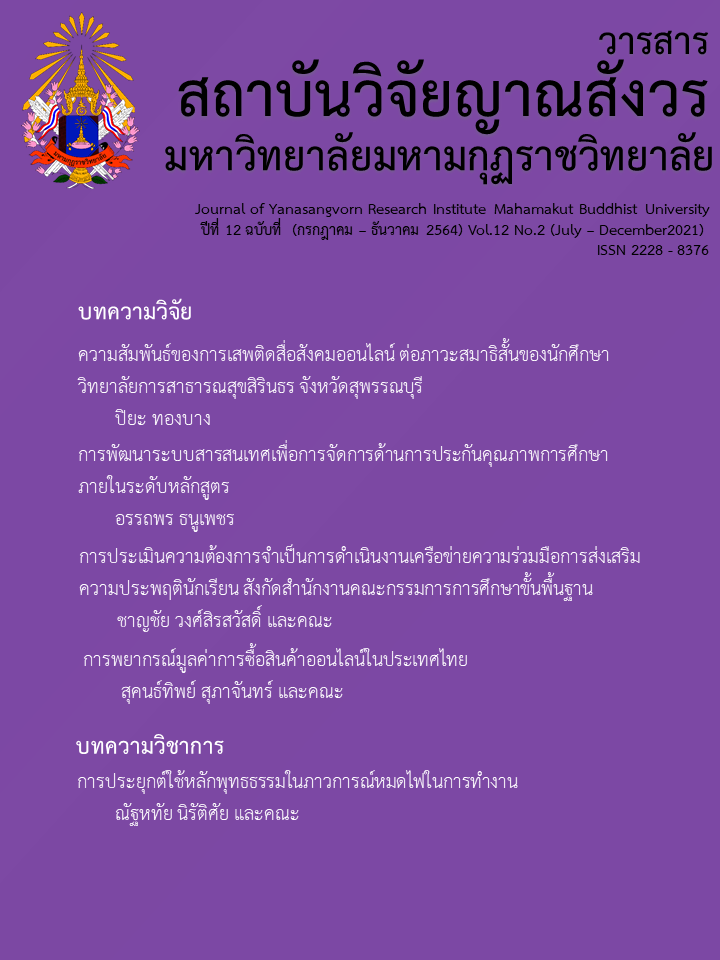A DEVELOPMENT INDICATORS FOR EDUCATIONAL INEQUALITY IN PRESCHOOL
Main Article Content
Abstract
The research aimed to examine for Indicators for educational inequality in preschool. The sample in the research were 788 preschool, ranging in age between 3-5 years old. The sample were selected using a multi-stage sampling technique. The research instrument was questionnaire about educational inequality in preschool for parent and teachers. Data was analyzed by frequency, percentage and and the components of Indicators for educational inequality in preschool were derived by exploratory factor analysis technique, obtained by principle Component Analysis and Orthogonal Rotation by Varimax Method.
The results showed that there six components; thirty indicators for educational inequality in preschool; perception of parent, teacher’learning experiences development of preschool, physical Emotion Intelligence development, Social development, Media and Technology and social capital.The variability of overall components was explainable to the indicators by 60.89 percent. The confirmatory factor analysis found that the model fit the structure from the exploratory factor analysis. The Chi-square test of goodness of fit=345.97, df=305, P= 0.11, GFI= 0.96, AGFI= 0.95, CFI= 1.00, RMSEA= 0.01, RMR= 0.02, SRMR= 0.03
Article Details
References
กระทรวงศึกษาธิการ. (2560). หลักสูตรการศึกษาปฐมวัย พุทธศักราช 2560. กรุงเทพฯ: โรงพิมพ์ชุมนุมสหกรณ์การเกษตรแห่งประเทศไทย.
โกวิท โกเสนตอ, จินตนา จันทร์เจริญ และคำนึง ทองเกตุ. (2557). ปัจจัยที่เอื้อต่อการพัฒนาคุณภาพการศึกษาระดับปฐมวัยของโรงเรียนตามแนวชายแดนไทย-พม่า สังกัดสำนักงานเขตพื้นที่การศึกษาประถมศึกษาเชียงใหม่ เขต 3. วารสารมหาวิทยาลัยราชภัฏลำปาง, 2(2), 24-33.
ปิยะนุช ศรีตะปัญญะ. (2561). ปัจจัยที่มีความสัมพันธ์กับการพัฒนาคุณภาพผู้เรียนระดับปฐมวัย สังกัดสำนักงานเขตพื้นที่การศึกษาประถมศึกษาชลบุรี เขต 2. วารสารวิจัยรำไพพรรณี, 12(1), 96-104.
ประไพพิศ สิงหเสม, ศักรินทร์ สุวรรณเวหา และอติญาณ์ ศรเกษตริน. (2560).การส่งเสริมโภชนาการในเด็กก่อนวันเรียน. วารสารเครือข่ายวิทยาลัยพยาบาลและการสาธารณสุขภาคใต้, 4(3), 226-235.
พิริยะ ผลพิรุฬห์ และศิวัช เทียมทัด. (2559). เศรษฐศาสตร์การศึกษาปฐมวัย: การเข้าถึงการศึกษาปฐมวัยและผลสัมฤทธิ์ของการศึกษาต่อในอนาคต. วารสารเศรษฐศาสตร์ประยุกต์, 23(1), 1-34.
แผนการศึกษาชาติ พ.ศ. 2560- 2579. (2564). กรุงเทพ: สำนักเลขาธิการสภาการศึกษา.
Elliott, L., & Bachman, H. J. (2018). Parents' educational beliefs and children's early academics: Examining the role of SES. Children and Youth Services Review, 91(-), 11-21.


